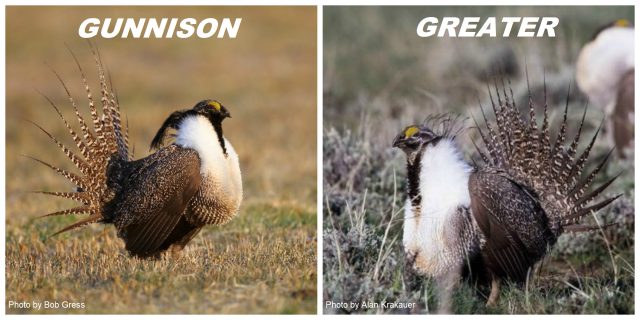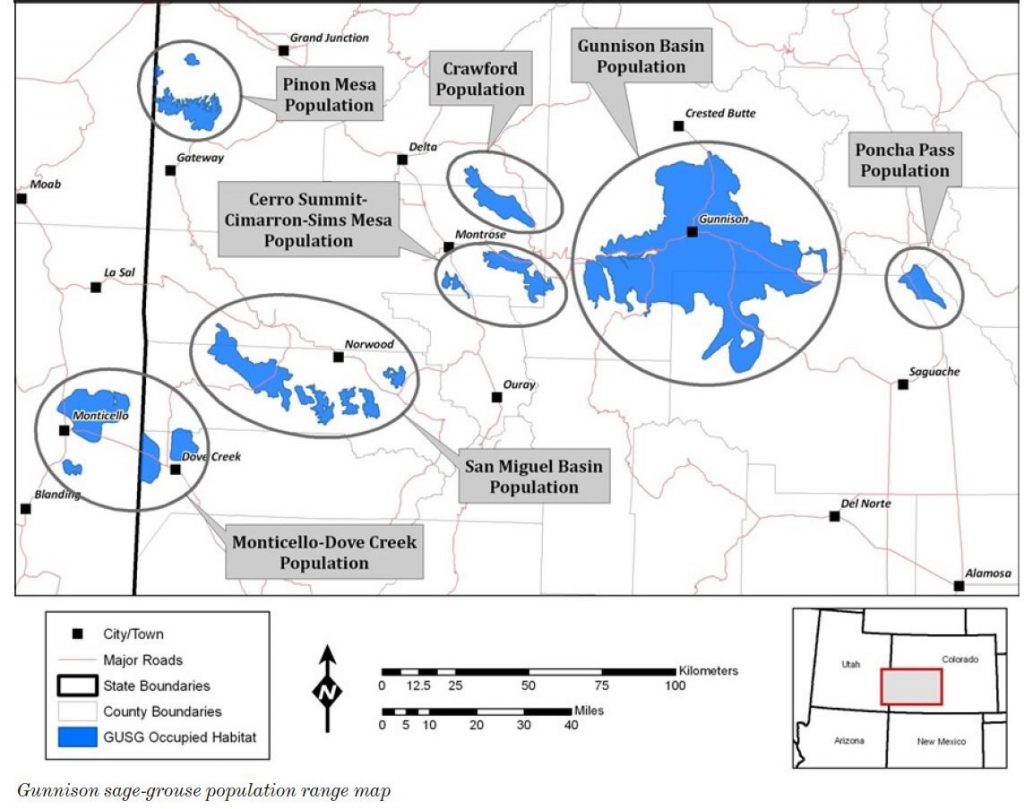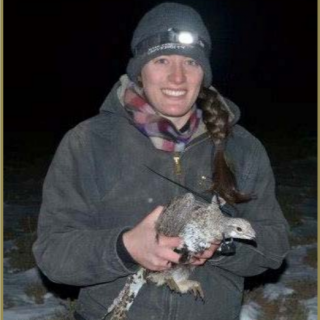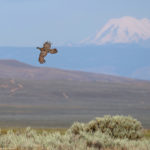What’s The Difference Between Gunnison And Greater Sage-Grouse?

September 28, 2016
Photo left by Bob Gress. Photo right by Alan Krakauer.
Ask an Expert: Marcella Fremgen, Private Lands Range Ecologist, Bird Conservancy of the Rockies (and partners)
When did people first discover two different species of sage grouse?
Lewis and Clark were the first to document sage grouse during their exploration of the West in 1806. But it wasn’t until the late 1970s that researchers in Colorado started to notice differences between the sage grouse in the northern versus the southern part of the state.
In 2000, Dr. Jessica Young and her colleagues published a paper in the Wilson Bulletin suggesting that grouse in the Gunnison basin were distinct from grouse in other parts of the West. After reviewing the data, the American Ornithologist’s Union (AOU) recognized Gunnison sage-grouse as a species. This bird is the newest AOU-recognized species on the North American mainland.
What’s the difference between the two birds?
Well, the most obvious differences are the morphological ones—Gunnison sage-grouse are smaller, only two-thirds the size of greater sage-grouse. They also have different banding patterns on their tail feathers as well as more prominent ponytail feathers (which scientists call “filoplumes”). And they are different genetically and behaviorally, too.
While both species congregate on leks each spring, their mating displays look and sound different—male Gunnison sage-grouse wag their tails at the end of their display, and also pop their air sacs several more times than greater sage-grouse.
| GUNNISON SAGE-GROUSE | GREATER SAGE-GROUSE | |
| PHYSICAL TRAITS |
|
|
| BEHAVIORAL TRAITS |
|
|
| GENETIC TRAITS |
|
|
Where do Gunnison sage-grouse live?
Like all sage grouse, the Gunnison species rely on wide-open, intact habitat dominated by sagebrush, the plants that provide food and cover for the birds year-round. Gunnison sage-grouse are found specifically in southwestern Colorado and southeastern Utah within seven isolated subpopulations (pictured below).
Unfortunately, the Gunnison sage-grouse only occupy 7-10% of their historic range. Although the largest subpopulation is relatively stable, the other six satellite populations have shown long-term declines. These highly fragmented, declining populations were part of what contributed to the U.S. Fish and Wildlife Service’s decision to list Gunnison sage-grouse as a threatened species under the Endangered Species Act in 2014.

Meet the Expert

Marcella Fremgan holds a Gunnison sage-grouse hen in Colorado. Courtesy of Boise State University
What inspires you about working to conserve sagebrush habitat?
I love working to protect this unique landscape because, to me, it represents the Western way of life. People often drive by sagebrush on the highway and think it’s a boring, homogeneous landscape. But if you get out of the car and walk around, you quickly realize that it’s actually very diverse in terms of plants and animals.
Sagebrush itself is an amazing plant—not only does it provide a home for some really cool animals, it also has a unique chemical makeup, which we’re learning more about all the time. Sagebrush might even help cure cancer!
What do you enjoy doing in your free time?
I enjoy spending time with my friends and family in the outdoors, doing anything from skiing, snowshoeing or backpacking to hiking, fishing, or gardening.
Learn more about sage grouse characteristics and behavior
Read more “Ask An Expert” posts
—
The Sage Grouse Initiative is a partnership-based, science-driven effort that uses voluntary incentives to proactively conserve America’s western rangelands, wildlife, and rural way of life. This initiative is part of Working Lands For Wildlife, which is led by USDA’s Natural Resources Conservation Service.
—





